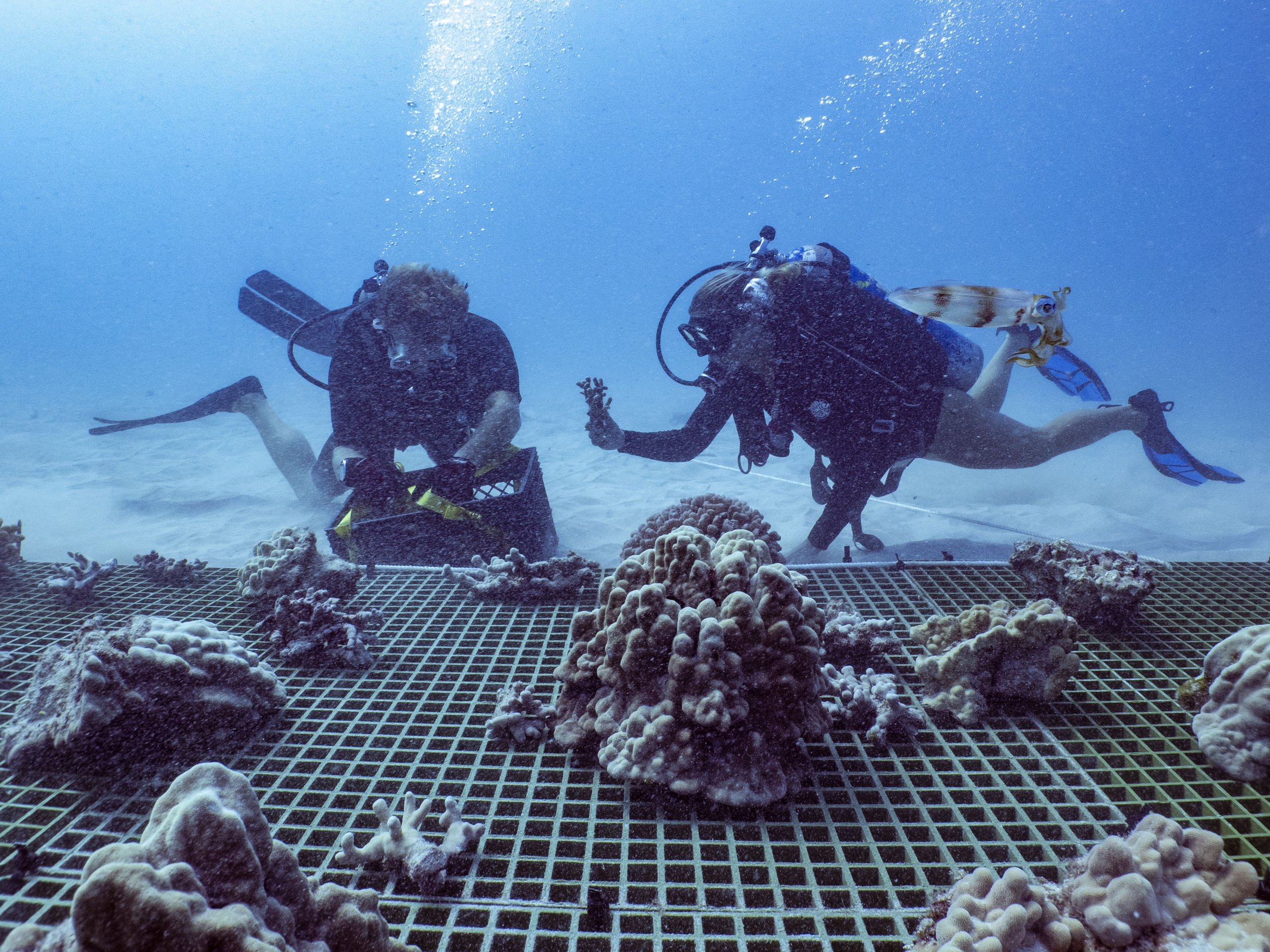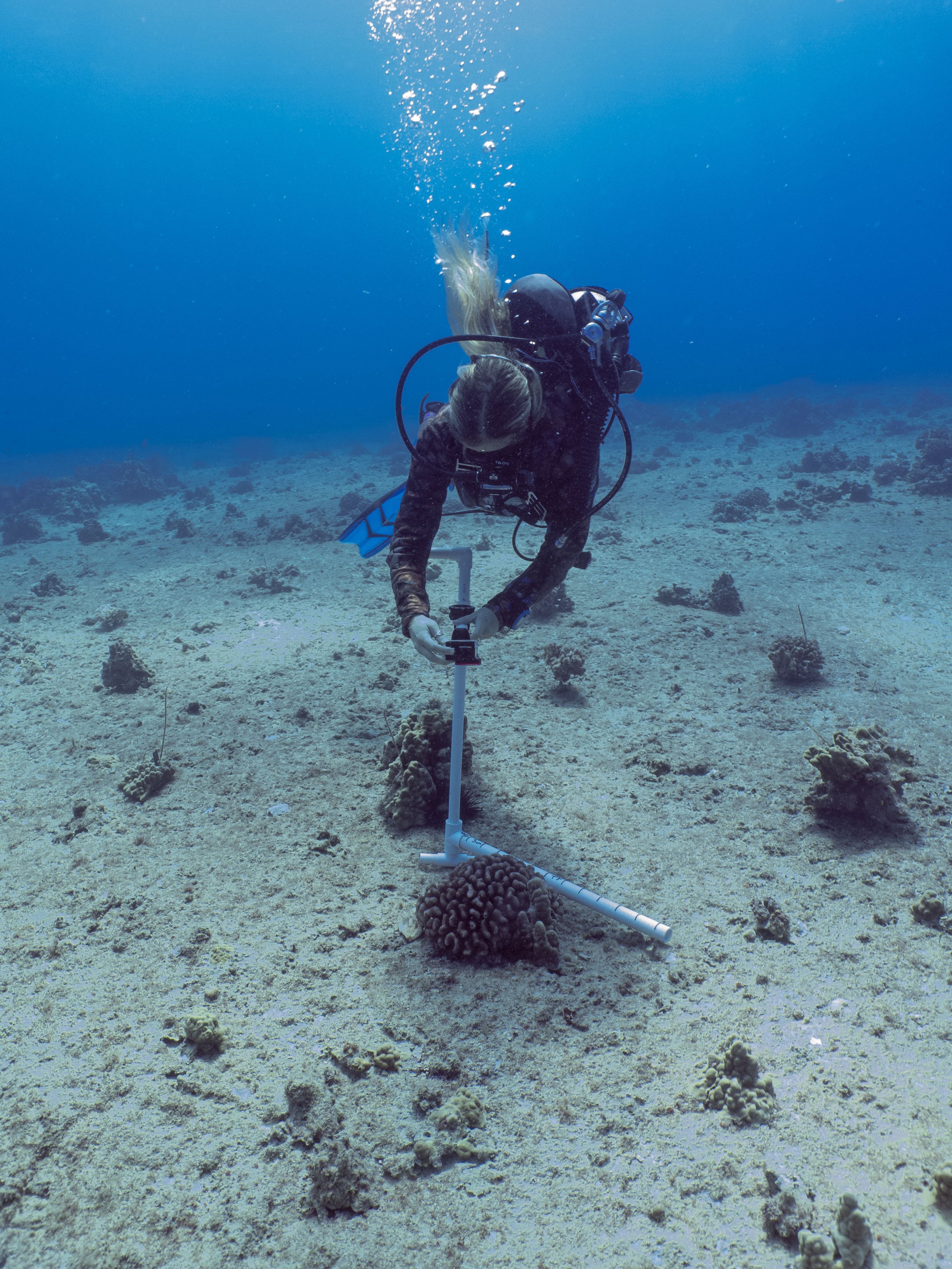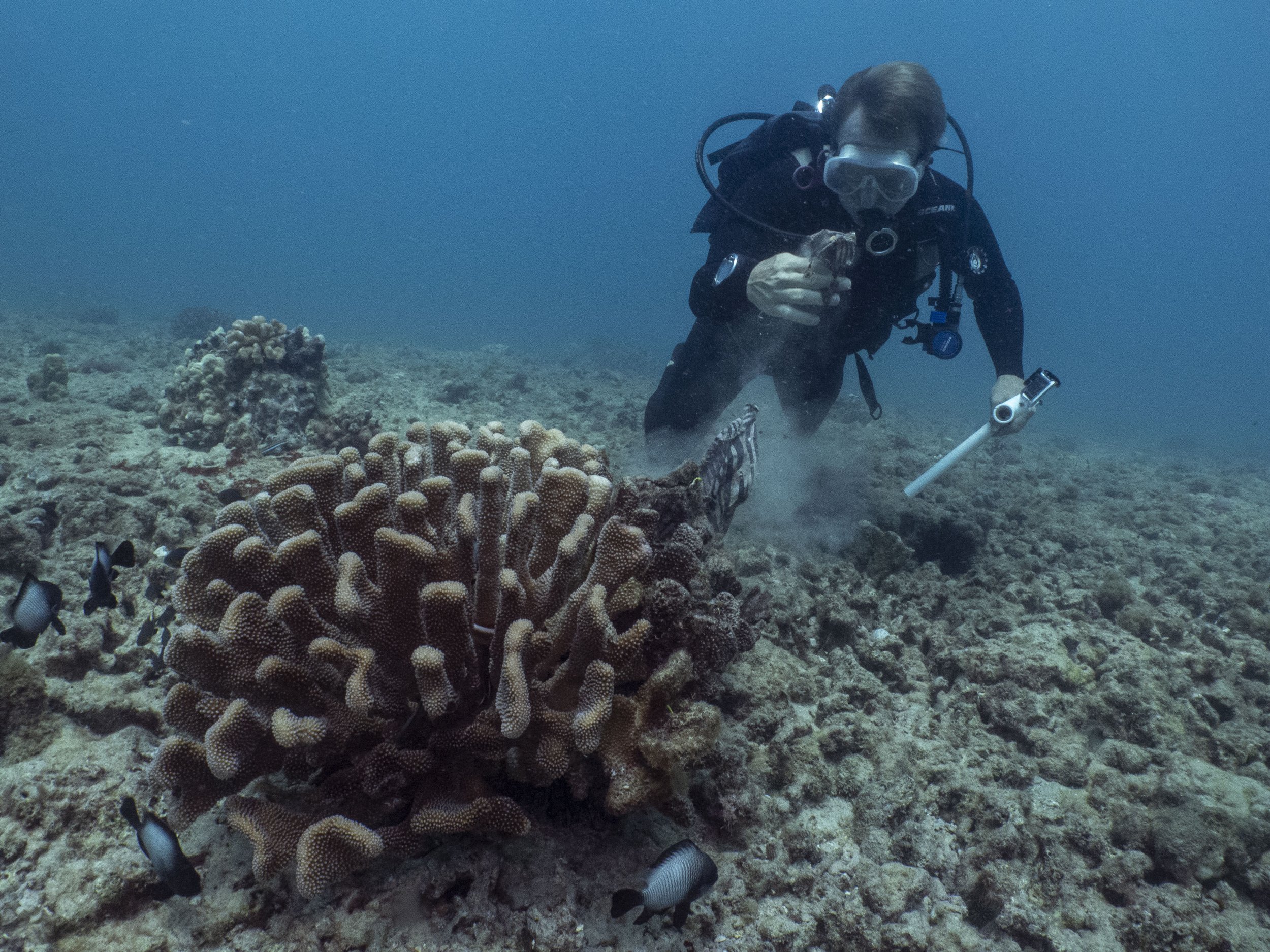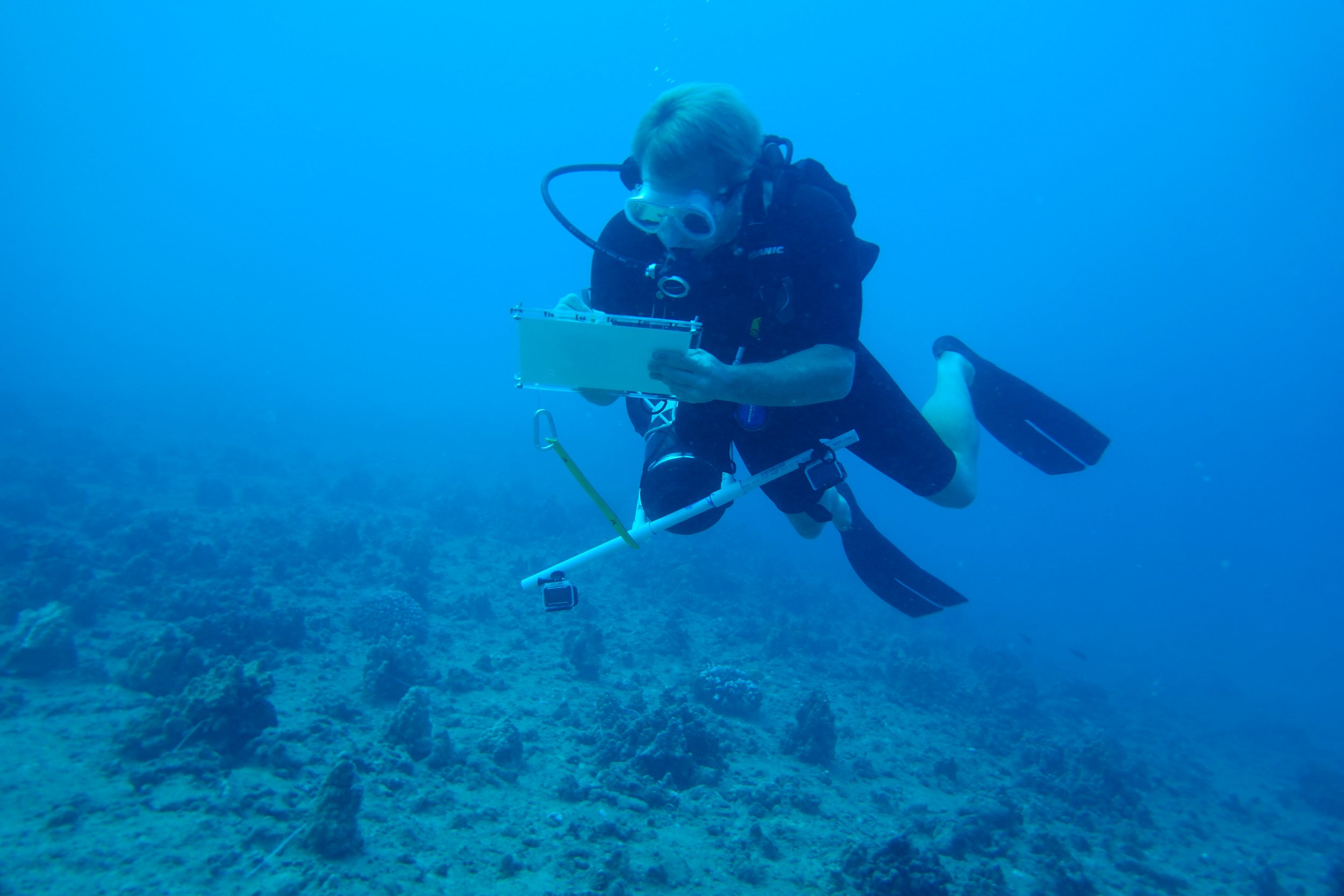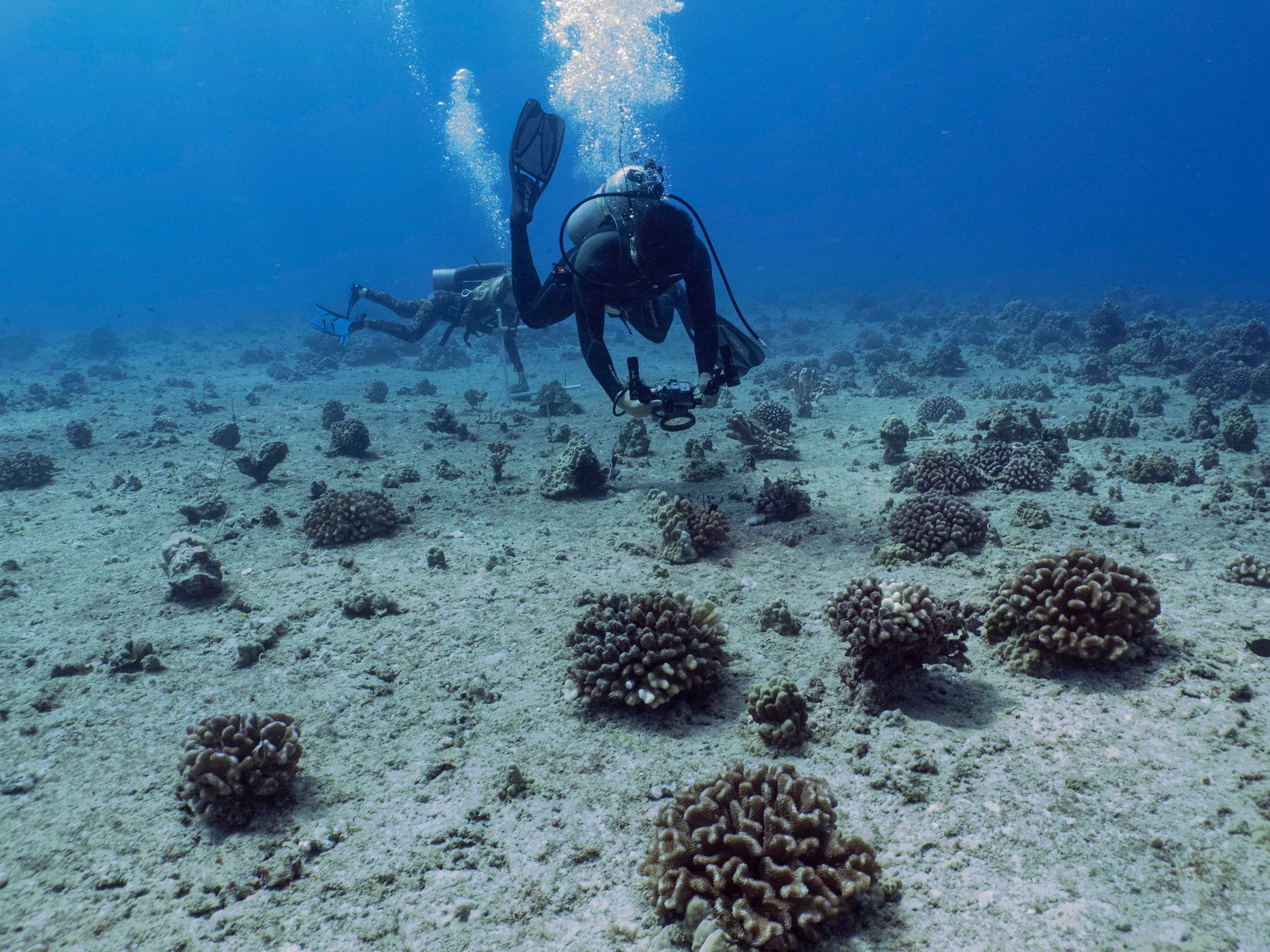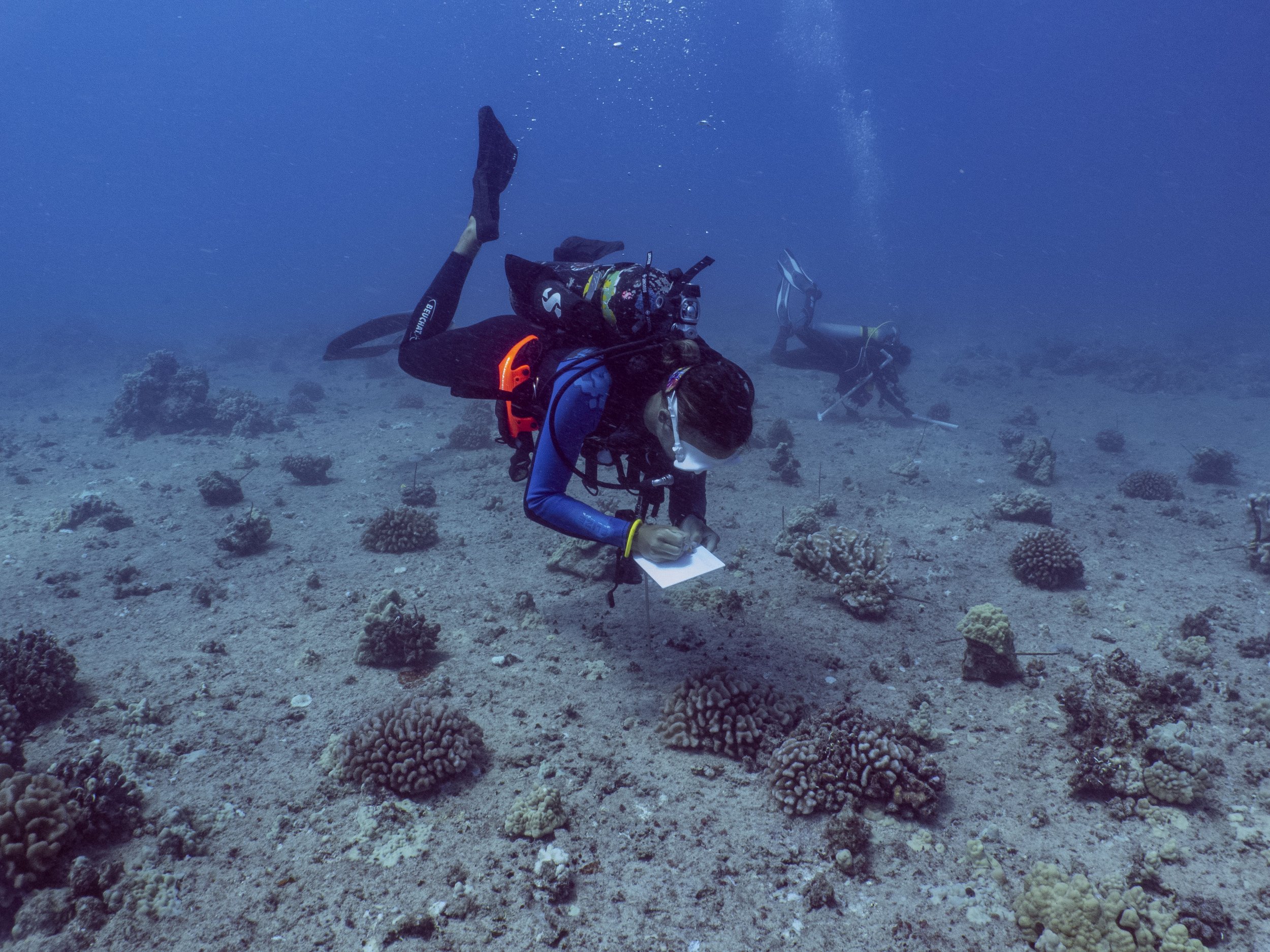
Science & Monitoring
Kuleana Coral Restoration is dedicated to developing successful coral restoration techniques specific to Hawaiʻi rooted in scientific rigor and traditional cultural knowledge.
We are continuously collecting data to monitor the efficacy of our restoration methods, participating in knowledge sharing with communities and institutions, and testing new techniques at our sites in situ.

Areas of Focus
-

Outplant Survivability & Growth Rates
We explore factors that affect the survivability of outplanted corals so we can improve efficacy. By tracking outplant success, we better understand how the health, size, and species of the source material affects the long term survivability and growth of the outplants.
-

Attachment Techniques
There are several methods used around the world for reattaching corals to the reef. We’re exploring different methods to find the most effective and non-invasive approach suitable for the unique ecology of Hawaiian coral reefs.
-

Ecological Impacts
We aim to understand the impacts of our restoration efforts, not only the coral’s health and growth over the long term, but also the impact on the fish, invertebrate, and algal populations through in-water surveys and monitoring.
-

Rational Restoration Design
We aim to design restoration sites that reflect the assemblages nearby. Considering factors such as depth, current, temperature, species composition, and colony distribution, we outplant coral colonies in alignment with nature.
Mapping & Monitoring
Now, more than ever, we need to be vigilant in the early detection, intervention, and management of coral bleaching, invasive species, and disease that are devastating coral reefs around the world.
Using photogrammetry, our team works to monitor restoration sites before, during, and after interventions. Mapping data allows us to track restoration success by determining changes in coral cover, growth rates, survivability, and instances of detachment.
In addition to providing insights to our restoration results, photogrammetry maps are a valuable tool for community engagement, and restoration planning. We can effectively bring stakeholders underwater to better collaborate on a place-based restoration strategy.
Integrating Indigeneity
Our team recognizes Native Hawaiian ancestral wisdom as scientific knowledge that can greatly enhance our restoration goals. In addition to working from a lens of Western science, we aim integrate ecological knowledge into our methods.
Example: Imu Kai
Informed by traditional Hawaiian knowledge, imu kai is a modular approach to coastal protection through artificial reef.
Innovating Module Design
-

Frag Racks
Large or small, underwater holding racks serve as foundational structures during intervention or as a temporary in-water nursery.
-

Pyramid
Our original module design maximizes surface area for fragments to conjoin, supporting colony reestablishment.
-
Reef Stars
Innovated by Mars Sustainable Solutions, reef stars stabilize substrate, promote recruitment, and create fish habitat.
-

Dome
In partnership with BYU Hawaiʻi, we have piloted Fish Habitat modules to support juvenile fish stocks.
